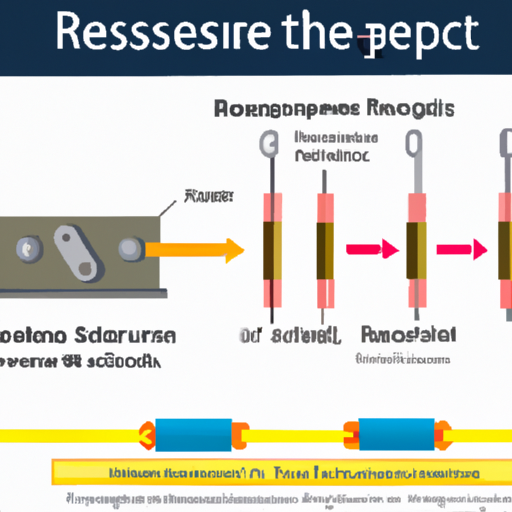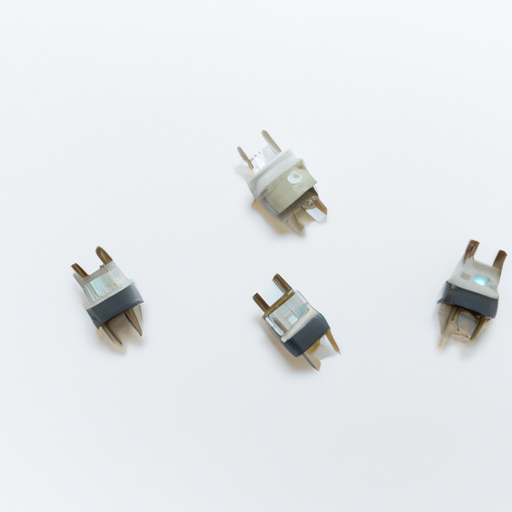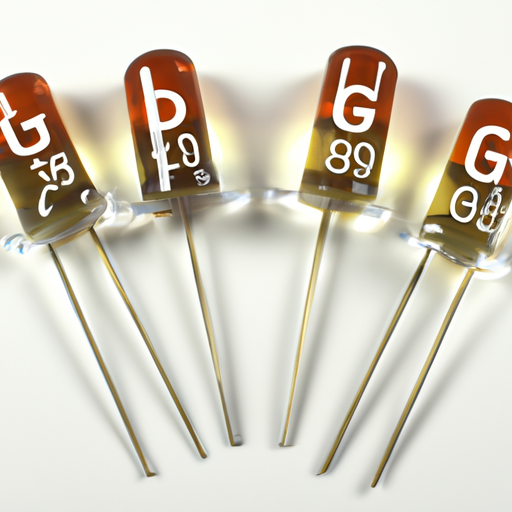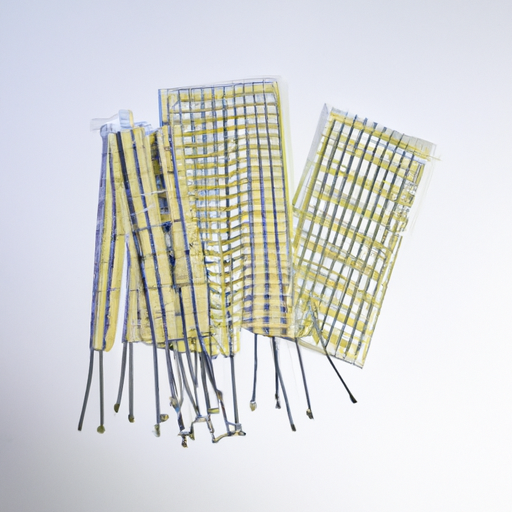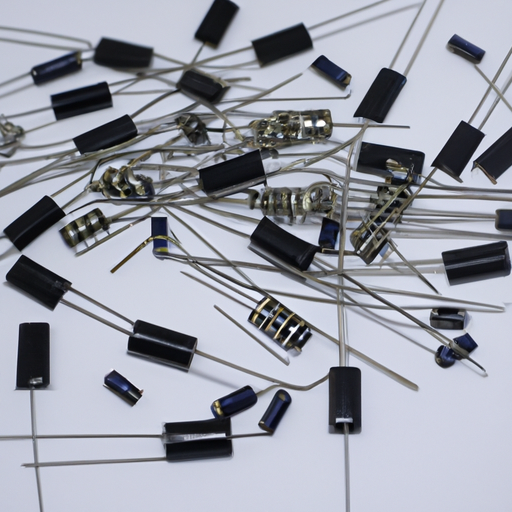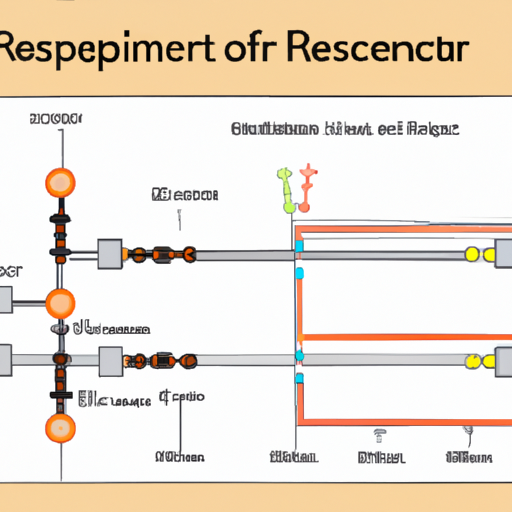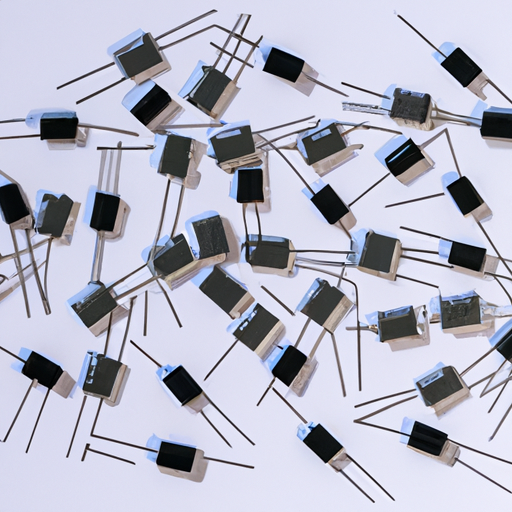Product Characteristics of the Power of the Resistor
I. Introduction
A. Definition of a Resistor
A resistor is a fundamental electronic component that limits the flow of electric current in a circuit. It is characterized by its resistance value, measured in ohms (Ω), which determines how much current will flow for a given voltage according to Ohm's Law (V = IR). Resistors are essential for controlling voltage and current levels, dividing voltages, and protecting sensitive components from excessive current.
B. Importance of Resistors in Electrical Circuits
Resistors play a crucial role in virtually all electronic devices. They are used in various applications, from simple circuits to complex systems, ensuring that components operate within their specified limits. By managing current flow, resistors help maintain the stability and functionality of electronic devices, making them indispensable in circuit design.
C. Overview of Power Characteristics in Resistors
One of the key characteristics of resistors is their power rating, which indicates the maximum amount of power they can dissipate without failing. Understanding the power characteristics of resistors is vital for selecting the right component for a specific application, ensuring reliability and safety in electrical circuits.
II. Understanding Resistor Power Ratings
A. Definition of Power Rating
The power rating of a resistor refers to the maximum power it can handle before it risks overheating and potentially failing. This rating is typically expressed in watts (W) and is determined by the resistor's physical construction and material properties.
B. Importance of Power Ratings in Resistor Selection
Choosing a resistor with an appropriate power rating is critical for the longevity and reliability of a circuit. If a resistor is subjected to power levels exceeding its rating, it can overheat, leading to failure, which may damage other components in the circuit. Therefore, understanding power ratings is essential for engineers and designers.
C. Common Power Ratings
Resistors come in various power ratings, including 1/8W, 1/4W, 1/2W, 1W, and higher. The choice of power rating depends on the specific application and the expected current and voltage levels in the circuit. For instance, low-power applications may only require 1/8W resistors, while high-power applications, such as power amplifiers, may necessitate resistors rated for several watts or more.
III. Factors Influencing Resistor Power Characteristics
A. Material Composition
The material used in a resistor's construction significantly affects its power characteristics.
1. **Carbon Composition Resistors**: These resistors are made from a mixture of carbon and a binding material. They are generally less expensive but have lower power ratings and can be less stable over time.
2. **Metal Film Resistors**: Known for their precision and stability, metal film resistors offer better power ratings and lower noise levels compared to carbon composition resistors. They are commonly used in applications requiring high accuracy.
3. **Wirewound Resistors**: These resistors are constructed by winding a metal wire around a ceramic or fiberglass core. They can handle high power levels and are often used in high-power applications due to their excellent heat dissipation properties.
B. Physical Size and Construction
The physical size and construction of a resistor also influence its power characteristics.
1. **Surface Mount vs. Through-Hole**: Surface mount resistors are typically smaller and designed for automated assembly, while through-hole resistors are larger and often used in applications where higher power ratings are required.
2. **Heat Dissipation Mechanisms**: The ability of a resistor to dissipate heat is crucial for its performance. Resistors with larger surface areas or those designed with heat sinks can handle higher power levels without overheating.
C. Environmental Conditions
Environmental factors can significantly impact a resistor's performance and power characteristics.
1. **Temperature Effects**: Resistors have a temperature coefficient, which indicates how their resistance changes with temperature. High temperatures can lead to increased resistance and reduced power handling capabilities.
2. **Humidity and Moisture**: High humidity can affect the insulation properties of resistors, leading to potential failures. Moisture can also cause corrosion, impacting the resistor's performance.
3. **Altitude and Pressure**: At higher altitudes, the air pressure decreases, which can affect the cooling efficiency of resistors. This is particularly important in aerospace applications where components may be exposed to extreme conditions.
IV. Power Dissipation in Resistors
A. Understanding Power Dissipation
Power dissipation in resistors refers to the conversion of electrical energy into heat. This is a critical aspect of resistor operation.
1. **Formula**: The power dissipated by a resistor can be calculated using several formulas:
- \( P = I^2R \) (where P is power, I is current, and R is resistance)
- \( P = \frac{V^2}{R} \) (where V is voltage)
- \( P = IV \) (where I is current and V is voltage)
2. **Importance of Calculating Power Dissipation**: Accurately calculating power dissipation is essential for ensuring that resistors operate within their safe limits. This helps prevent overheating and potential failure.
B. Thermal Management
Effective thermal management is crucial for maintaining resistor performance.
1. **Heat Sinks and Cooling Techniques**: In high-power applications, heat sinks can be used to dissipate heat away from resistors, enhancing their performance and longevity.
2. **Thermal Resistance and its Impact on Performance**: The thermal resistance of a resistor indicates how effectively it can dissipate heat. Lower thermal resistance leads to better heat management and improved reliability.
V. Types of Resistors and Their Power Characteristics
A. Fixed Resistors
Fixed resistors have a constant resistance value and are widely used in various applications. Their power characteristics depend on their construction and material.
1. **Characteristics and Applications**: Fixed resistors are used in voltage dividers, current limiting, and biasing applications. Their power ratings must match the circuit requirements to ensure safe operation.
B. Variable Resistors (Potentiometers and Rheostats)
Variable resistors allow for adjustable resistance values, making them versatile components in circuit design.
1. **Power Ratings and Applications**: Potentiometers are commonly used in volume controls and tuning circuits, while rheostats are used for adjusting current levels. Their power ratings must be considered to prevent overheating during operation.
C. Specialty Resistors
Specialty resistors, such as fusible resistors and high-power resistors, have unique power characteristics tailored for specific applications.
1. **Unique Power Characteristics**: Fusible resistors are designed to fail safely under excessive power conditions, protecting the circuit. High-power resistors are built to handle significant power levels, making them suitable for industrial applications.
VI. Applications of Resistors Based on Power Characteristics
A. Consumer Electronics
In consumer electronics, resistors are used in various applications, including audio equipment, televisions, and computers. Their power characteristics must align with the device's requirements to ensure optimal performance.
B. Industrial Applications
In industrial settings, resistors are used in control systems, motor drives, and power supplies. High-power resistors are often required to handle the demands of these applications.
C. Automotive and Aerospace
Resistors in automotive and aerospace applications must withstand extreme conditions. Their power ratings and thermal management capabilities are critical for ensuring reliability in these environments.
D. Medical Devices
In medical devices, precision and reliability are paramount. Resistors must meet strict power ratings to ensure safe operation in critical applications.
VII. Safety Considerations
A. Overheating and Failure Modes
Overheating can lead to resistor failure, which may cause circuit malfunctions or damage to other components. Understanding the power characteristics of resistors helps mitigate these risks.
B. Importance of Proper Resistor Selection
Selecting the right resistor with an appropriate power rating is essential for safe operation. Engineers must consider the expected current, voltage, and environmental conditions when choosing resistors.
C. Guidelines for Safe Operation
To ensure safe operation, it is important to follow guidelines such as derating resistors in high-temperature environments and using heat sinks for high-power applications.
VIII. Conclusion
A. Summary of Key Points
Resistors are vital components in electrical circuits, and understanding their power characteristics is essential for effective circuit design. Factors such as material composition, physical size, and environmental conditions influence their power ratings and performance.
B. The Role of Resistor Power Characteristics in Circuit Design
The power characteristics of resistors play a crucial role in ensuring the reliability and safety of electronic devices. Proper selection and thermal management are key to optimizing performance.
C. Future Trends in Resistor Technology
As technology advances, new materials and designs are being developed to enhance resistor performance. Innovations in thermal management and power handling capabilities will continue to shape the future of resistor technology.
IX. References
A. Suggested Reading and Resources
- "The Art of Electronics" by Paul Horowitz and Winfield Hill
- "Electronic Components: A Complete Reference for Project Builders" by Mark J. Balch
B. Industry Standards and Guidelines
- IEC 60115: Fixed Resistors for Use in Electronic Equipment
- EIA-198: Standard for Resistor Technology
This blog post provides a comprehensive overview of the product characteristics of the power of the resistor, highlighting the importance of understanding these characteristics for effective circuit design and application.

